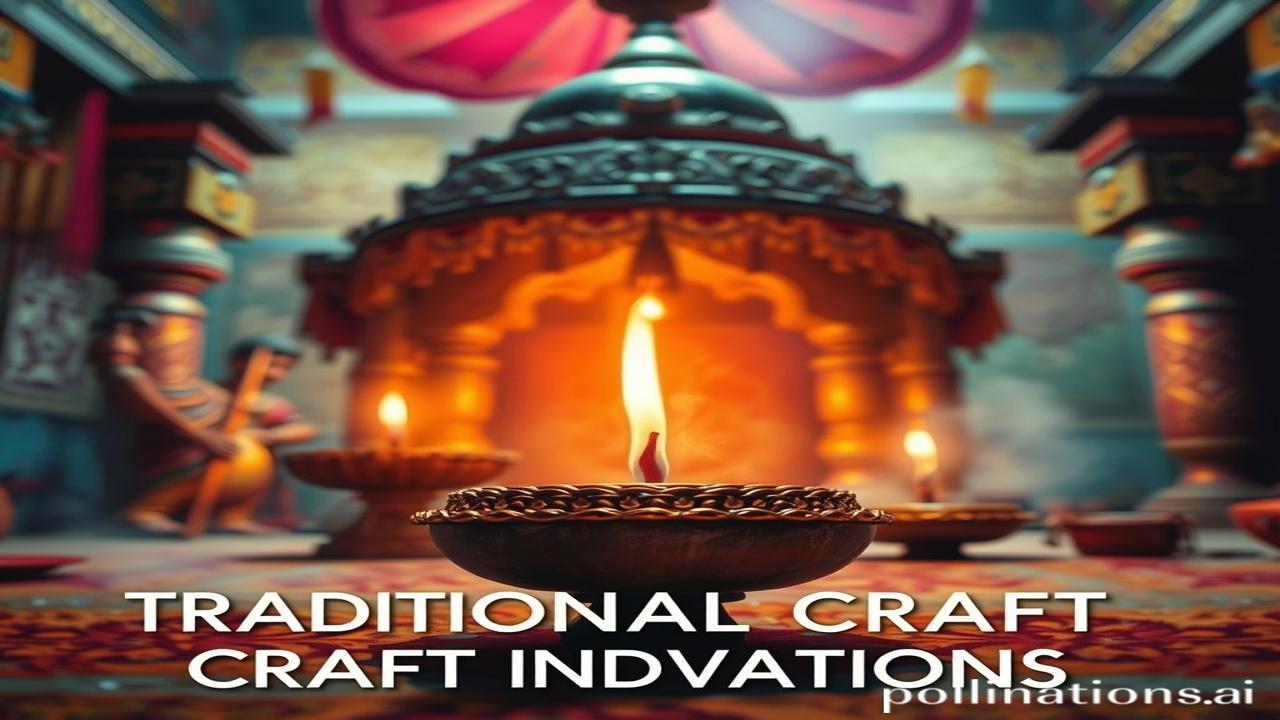Waqt Ki Silwaton Mein Chhupi Kala: Traditional Craft Innovations
Kabhi socha hai, ek rangrez ki ungliyon mein base rang ki rahasya kya hoti hai? Ya phir ek potter ke chakke ki goonj mein chhupi kahani? Waqt ki silwaton mein chhupi, hamari traditional crafts, sirf kala nahin, jeevan ka ek darpan hai. They are whispers from a past that still breathes within us, innovations born from necessity and nurtured by generations.
Bharatiya Kala Ka Itihasik Daur: A Journey Through Time
Traditional craft innovations in India aren’t just about pretty things; they’re about survival, ingenuity, and a deep connection to the land. From the Indus Valley Civilization (3300-1700 BCE) with its intricate pottery and metalwork, to the Mughal era with its stunning pietra dura and carpet weaving, Indian artisans have consistently pushed boundaries.
Think about it. Khadi, born from the Swadeshi movement, became a symbol of self-reliance and a tool for political resistance against British rule. Ajrakh printing, originating in Sindh (now parts of Pakistan and Gujarat), uses natural dyes and complex geometric patterns that have been passed down through families for centuries. Each motif tells a story, a philosophy, a way of life. These innovations weren’t just about making beautiful objects; they were about preserving culture and identity in the face of adversity.
Zameeni Sach: Insaan Aur Zindagi – The Human Touch
Imagine a young woman in Kutch, Gujarat. The sun beats down on her as she meticulously embroiders a vibrant textile. Her fingers move with practiced grace, guided by the stories her grandmother told her. Each stitch is a prayer, a hope, a connection to her ancestors. Her life revolves around this craft, it is her livelihood and her legacy.
Or picture a potter in Rajasthan, his hands covered in clay, shaping a simple pot on his wheel. The rhythmic whir of the wheel is a constant in his life, a meditative hum that connects him to the earth. He mixes innovative techniques with the age old tradition to bring out a product which is unique. He dreams of his children continuing his craft, of passing on the knowledge and skills that have sustained his family for generations. Yeh unka jeevan hai, unki pehchaan hai.
“Beta, yeh kala humare khoon mein hai,” his father had told him. “Isko zinda rakhna humara farz hai.”
Dharohar Aur Pehchan: Echoes in Modern India
Today, the echoes of these traditional craft innovations resonate throughout India. We see them in the vibrant colours of our festivals, the intricate designs of our sarees, and the handcrafted objects that adorn our homes. Kalamkari paintings adorn temple walls, intricate wood carvings decorate furniture, and block-printed textiles fill our wardrobes.
These crafts are not just relics of the past; they are living traditions that continue to evolve and adapt to modern times. They represent our Bharatiyata, our unique Indian identity, a testament to the resilience and creativity of our people. They are a tangible link to our ancestors and a source of pride and inspiration for future generations.
Mazedar Tathya Ya Bhram-Bhanjak: Myth vs. Reality
Log samajhte hain ki “handicraft sirf gareeb logon ka kaam hai.” Lekin asli sach yeh hai ki many of these traditional crafts are highly skilled art forms that require years of training and dedication. Some pieces command exorbitant prices and are valued internationally for their skill, uniqueness and cultural value. They are not just commodities; they are works of art that deserve to be celebrated and preserved.
Drishya Aur Bhavnaen: A Symphony of the Senses
The air smells of woodsmoke and sandalwood. The temple walls feel cool and smooth to the touch. The sounds of chanting and the rhythmic beat of drums fill the air. The colours are vibrant and intoxicating – the deep reds of the earth, the brilliant blues of the sky, the shimmering golds of the sun. Yeh ek anubhav hai, ek ehsaas hai, jo humein Bharat se jodta hai.
Antim Vichar Ya Uddharan: A Parting Thought
“कला एक दर्पण है जिसमें प्रत्येक व्यक्ति अपना चेहरा देखता है।” – “Art is a mirror in which everyone sees their own face.” Our traditional crafts are more than just objects; they are reflections of ourselves, our history, and our culture. Let us cherish and protect them, for in doing so, we are preserving our own soul.
